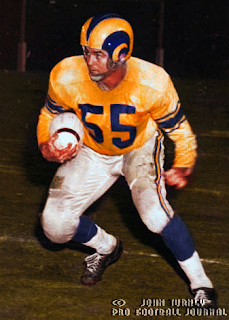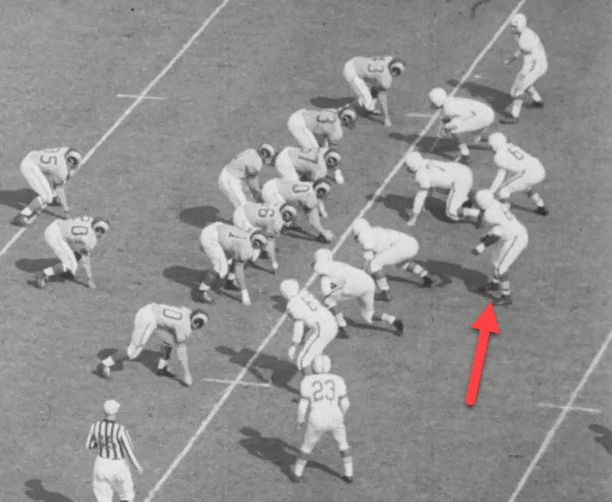 |
| Elvin Bethea, Steve Kiner and Curley Culp |
But for some teams, even though a winning record might escape them, a record of solid improvement is often enough to earn a good dose of respectability throughout the NFL. In 1972 and again in 1973, the Houston Oilers were regarded by everyone as the worst team in pro football. They could only manage to win one game in each of those seasons.
 |
| Sid Gillman |
But Gillman had faith in his players, and he had faith in his system and in his roster evaluations. He traded a very good defensive lineman in John Matuszak for a great defensive lineman in Curley Culp. Matuszak went to Kansas City, where he did not accomplish all that much.
Houston looked like a whole new team in the seventh week, as they destroyed a formidable Bengals team in Cincinnati, 34-21. The defense caused six timely turnovers in the win, while Gillman’s offense did not commit one. A winning attitude pervaded the team’s mindset with the victory over the Bengals, and some more big triumphs were awaiting the Houston squad.
But it was in the category of passing yardage allowed where the addition of Curley Culp to the defensive lineup really paid handsome dividends for Houston. From weeks one through seven, the Oilers surrendered 1,496 overall passing yards. From weeks eight through 14, that number shrunk to 879 overall passing yards.
Gillman’s offense began improving as well during the second part of the year. In contrast to the defense, no new players found their way into the starting lineup on offense from weeks eight through 14. Rather, it was just that the team’s defense was giving their counterparts on offense more chances with the ball. That extra time owning the pigskin equated to more yards, more first downs, more scoring opportunities, and ultimately, more victories.
“We’ve always had some talent,” said Houston quarterback Dan Pastorini as the 1974 season wore on, “but this year we seem to have more of a purpose. Don’t ask me to explain it. All I know is that I’m enjoying this game again.”
Pastorini’s enjoyment came during a four-game winning streak, which was just what Gillman and his players needed during the second half of the 1974 season. The Oilers managed to sweep the division-rival Bengals. They also claimed victories over the New York Jets and the AFC’s wild-card team, the Buffalo Bills. Houston took a 5-5 record into the Battle of Texas when they faced the Dallas Cowboys inside the Astrodome on November 24. Unfortunately for the Oilers, Dallas’ Doomsday Defense proved to be too much for the Houston offense, and the Cowboys prevailed, 10-0. In past seasons, the local fans would have seen and would have expected to see the Oilers fold up their tents after taking such a loss. But this 1974 version of the Houston team was not willing to give up that easily. They still had three games left on their schedule, and if they were able to win two of those contests, they would claim a break-even record for the year, and their best record since 1968.
Such a task would not be easy, but it would be possible. First up would be a trip to Three Rivers Stadium to take on the Steelers on December 1. he Oilers would shut out their division rivals in the second half and post a 13-10 victory. It was undoubtedly the most impressive triumph of the 1974 season for Houston. Then came a trip to Mile High Stadium to face the Denver Broncos. This could have been labeled as the most depressing loss of the year, as the Oilers fell, 37-14. It was a flop. Denver had six wins going into that game, just like Houston. But the Broncos proved to be much stronger, as the final score indicates.
There was now one game remaining on the Oilers’ 1974 schedule. It would be at home against another division foe, the Cleveland Browns, a team that was having its worst season ever up to that time. Cleveland had won only four games in this forlorn season, and as luck would have it, their win total would not change as the final gun sounded and Sid Gillman was being carried off the field following Houston’s 28-24 victory over the Browns.
“I’ve been in this business for a long time,” proclaimed Sid Gillman following his team’s win over Cleveland, “but this is the most satisfying season I’ve ever been through.” Dan Pastorini added that “…the Houston Oilers are a respectable team now. I think everybody in the league will attest to that.”
The Oilers indeed had devoted enough of themselves in all their efforts to produce a 7-7 record in 1974. It was a mark that practically no prognosticator would have predicted when the season began. Their players who were unable to make big plays and produce constructive efforts in 1972 and 1973 did so in abundance in 1974. It was a year where a perennial loser made a transition into much-deserved respectability.
Sources:
Boss, David. Prolog, The Official National Football League Annual for 1975. NFL Properties,
1975.
Robinson, Barry. “Oilers stop Browns, finish with 7-7 mark.” San Antonio Express, December
16, 1974, 40.
Joe Zagorski is a member of the Pro Football Writers of America and the Pro Football Researchers Association. His upcoming book on the 1973 Buffalo Bills entitled The 2,003-Yard Odyssey: The Juice, The Electric Company, and an Epic Run For a Record, will be released by Austin-Macauley publishers later in 2023. He is currently working on a biography of former Miami Dolphins Hall of Fame offensive guard Larry Little.

















